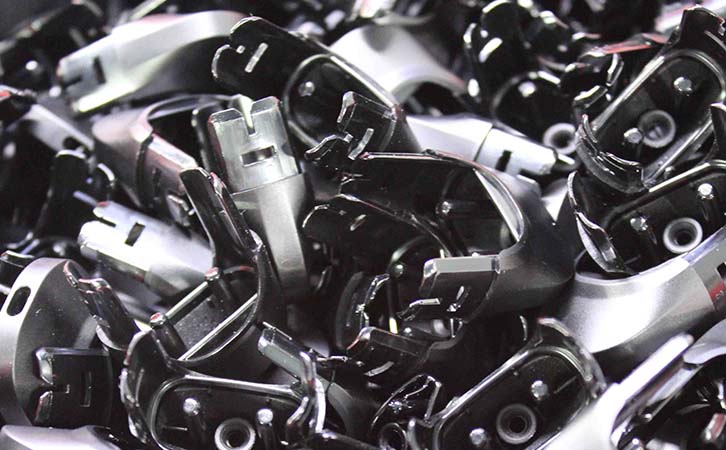Requirements for production process and precision
High precision molds: Electronic plastic components typically have complex structures and precise dimensions (such as thin walls, micropores, and fine buckles), requiring high precision, lifespan, and stability in mold processing. The mold needs to adopt a hot runner system to reduce nozzle material and improve efficiency.
Clean production environment: For optical components (such as lenses, light guides) or high reflectivity components, they need to be produced in a dust-free workshop to prevent dust particles from causing product defects.
Strict process control: Temperature, pressure, speed, cooling time and other parameters during the injection molding process need to be precisely controlled to ensure that the product has no burrs, shrinkage, silver lines, or weld marks, and the internal stress should be small to prevent cracking in the later stage.
Automation and Consistency: Large scale production requires high efficiency and quality consistency. Automated injection molding, robotic parts retrieval, and automated testing are standard configurations.

Testing requirements for performance and reliability
The produced accessories must undergo a series of rigorous tests to verify their reliability.
Environmental reliability testing:
High and low temperature cycling test: Simulate the performance of the product under different climatic conditions.
Constant temperature and humidity test: Evaluate the aging resistance and dimensional changes of materials in humid and hot environments.
UV aging test: Test the anti yellowing ability of components that may be exposed to sunlight.
Mechanical reliability testing:
Drop test: Assessing the impact resistance of the shell and internal structure.
Plug and unplug lifespan test: Test the number of times connectors, switches, interfaces, and other components can be reused.
Wear/Scratch Test: Evaluate the durability of surface treatment layers.
Electrical safety testing:
Voltage withstand test: to verify whether the insulator can withstand high voltage without being broken down.
Insulation resistance test: measure the resistance value of insulation materials.
Leakage Traceability Index (CTI): Evaluating the arc resistance of materials under electric fields and electrolytes.

